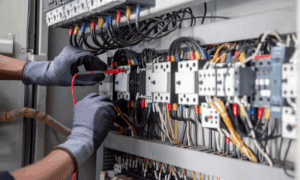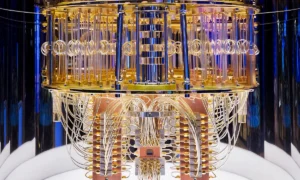RAM is critical to system engineers, logistics experts, and end-users of the system. A product’s utility and life-cycle costs can be affected by these factors. In the wake of World War II, reliability engineering was born.
Next came electronics and mechanics, followed by a variety of other technologies. More and more devices are being developed for the industrial, military, and consumer markets that incorporate computing capabilities. There is a need to analyze hardware and software for reliability since computers are increasingly integrated into many commercial, industrial, government, and military goods and systems.
Models of maintainability can be challenging. Evacuation, diagnosis, collection of resources, repair, inspection, and return are all included in the repair process. Repair schedules might be impacted by various factors, including inclement weather and public holidays. When a sub-process has a minimum execution time that is not zero, the maintainability distribution has a threshold.
In threshold parameters, the shortest possible repair time is used. Maintenance estimation might be affected by buffering effects since non-independent repair backlogs can occur. Analytical solutions to problems about maintainability are made difficult by this reliance, which favors simulation.
In this article, fundamental definitions are presented, followed by a condensed explanation of probability distributions and a discussion on the part that RAM engineering plays in creating and maintaining systems.
Reliability, Availability, and Maintainability (RAM) Explained
 Source: https://images.app.goo.gl/3hHpGoARCzVkR5FA8
Source: https://images.app.goo.gl/3hHpGoARCzVkR5FA8
The system reliability of engineering refers to how likely it is, under defined atmospheric and operating parameters, to execute its designed purpose effectively (from the customer’s perspective) throughout its planned life.
The maintainability of a system refers to the likelihood that regular maintenance will keep the system in the desired state or restore it to the original condition within a specific period.
Availability is the likelihood that the system will be operational at any given time, and it is dependent on the system’s reliability and maintainability. To fully appreciate the system’s reliability, maintainability, and availability, it is imperative that one master probability theory.
At the beginning of the design process, reliability is a criterion that must be included. Like power, storage, or efficiency, it is a system-wide feature. Reliability is a time-oriented quality feature that is highly prized in the industry. The quality or customer satisfaction is linked to metrics of system efficacy, such as reliability and maintainability. Consumers need to know how long the product will last.
In order to provide an accurate measurement of the dependability and maintainability of a system, a mathematical formula must demonstrate the functional connections that exist between the system’s components, its subsystems, and the system as a whole.
The reliability of individual components is directly tied to that of the whole system. A failure and repair allocation chart, spare and repair method diagrams, and a reliability block diagram make up a system reliability concept. All analyses of reliability, as well as various optimizations, are performed on these mathematical models.
The speed and simplicity with which a piece of machinery or an entire system can be fixed are referred to as its maintainability. It is related to the design and setup of the equipment, the availability of competent personnel, the maintenance procedures, and test equipment, as well as the setting in which the maintenance is performed.
Maintainability is the likelihood that an item will be kept in or returned to a specific condition within a specified amount of time, provided that the appropriate methods and resources are utilized.
The Objective of RAM Analysis
When evaluating the reliability, availability, and maintainability of a system, one tried-and-true method and helpful tool is the RAM analysis. It is essential to ensure that a project will be viable during its entire lifespan.
The purpose of a RAM analysis is to detect any significant contributors to loss of operational availability or difficulties that may impede the manufacturing productivity and recommend adjustments to the design or maintenance plan to facilitate RAM objectives and project needs to be satisfied.
Dependability is a phrase that can be used to summarize not only reliability and maintainability but also availability. The objective of the manufacturing process is to produce a dependable product that can be used when it is necessary, rarely fails while being used, and can be easily fixed when it does fail. This indicates that it must have the reliability and fault tolerance features to be wholly functioning and trustworthy.
Throughout the FEED stage of the project, the RAM research and analysis will typically be carried out. On the other hand, when the complexity of the project continues to grow with the progression of the work, it is possible to review and update it. However, the project cost shouldn’t be affected by the modification of the system during the later stage.
The most important reason to conduct a RAM analysis is to determine the factors that led to a reduction in operational availability or problems that could impede production throughput and then make recommendations for ways to enhance these areas.
The following is a list of the primary factors that are taken into consideration during a RAM analysis of a system:
- Examination of the dependability and redundancy of the apparatus
- Strategies for both maintenance and mobilization
- Failure rate
- Productivity of the system
- System evaluation
Failure Modes, Effect (and Criticality) Analysis (FMECA)
FMECA is a straightforward method for:
- Assess equipment or system failure mechanisms
- Determine how the failure of the sub-system will affect the system.
The inductive method investigates the malfunction of one part or subsystem at a time. The criticality part of the FMECA conducts an analysis of the frequency and impact of the end event.
AnFMECA is typically conducted in the form of a workshop that brings together participants from a variety of disciplines. Worksheets of their kind guarantee an organized examination. Worksheets for FMECA that are task-specific can vary.
FME(C)A benefits:
- Enhanced reliability
- Improved Security and Quality
The findings of the study can be applied to the process of locating essential pieces of machinery or components.































